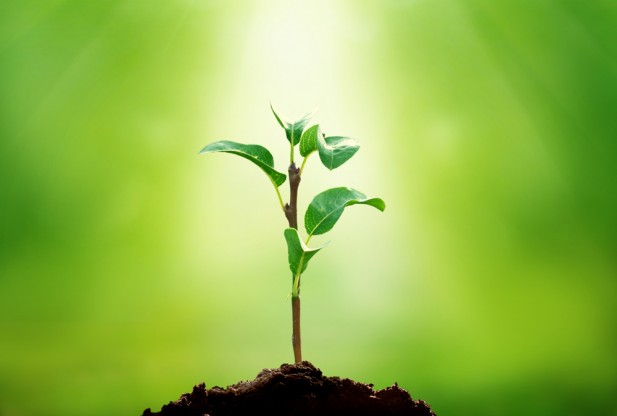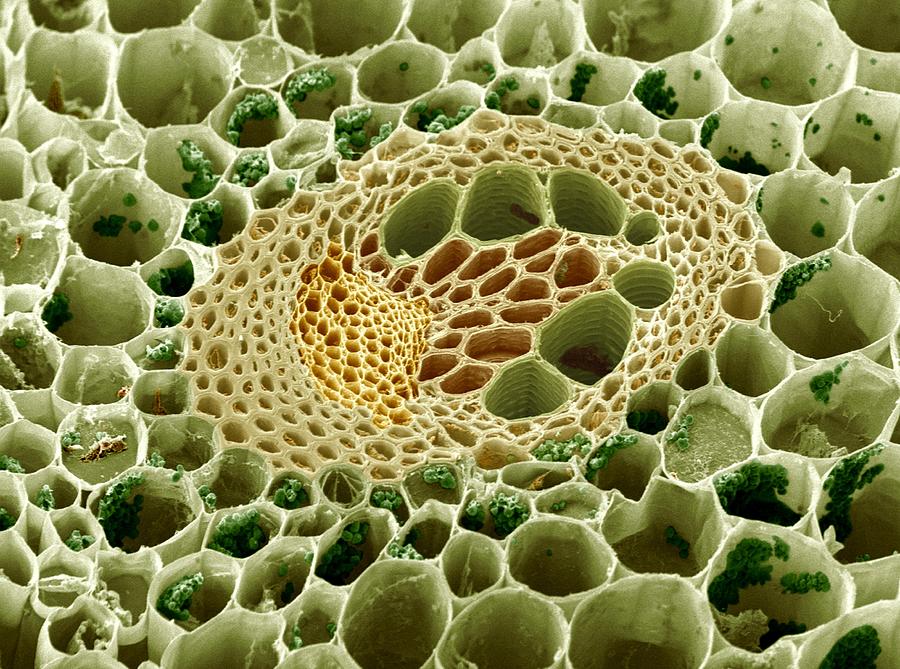Powerpoint: Plants General
Learning Objectives
- Identify the distinguishing characteristics of plants
- Describe the evolutionary trend of plants from water to land
- Describe the challenges of life on land
- Identify the structures designed for life on land and which plants developed them
- Explain how these structures help to meet the challenges of life on land
Members of Kingdom Plantae share the following characteristics:
All members of Kingdom plantae are eukaryotic, which means plant cells have membrane bound nuclei and organelles.
Photosynthetic autotrophs
Mostly multicellular
Cell walls made out of cellulose
Reproduce in a process known as alternation of generations (reproduce sexually and asexually) – Mistake in the powerpoint, plant life cycles include both an asexual and sexual stage of sexual reproduction.

Evolutionary Trend Amongst Plants
Kingdom Plantae is an extremely diverse kingdom, with many phyla and classes. Nevertheless, evolutionary trends exist to unify the groups. One of them is the movement of plants from a water environment to one on land. To explore this evolutionary trend, we will be focusing on five groups of plants.
Chlorophyta (Green algae)
Bryophyta (mosses, hornworts and liverworts)
Pteropsida (ferns)
Gymnosperms (focusing on coniferae)
Angiospermae (flowering plants)
But why would it be beneficial for plants to colonize the land in the first place? One of the reasons may be that the land has more direct sunlight. Perhaps at the time, the land was less competitive and provided new niches for plants.
Nevertheless, regardless of where plants live, they must have access to the following: sunlight, water, nutreints, gas exchange, and a means for reproducing. Plants on a land or in a water environment will, however, have different means and difficulties of getting these necessary things.
|
Water |
Land |
| Sunlight |
Sunlight weaker in water |
Sunlight is stronger on land |
| Water |
Plenty of water |
Danger of drying out |
| Nutrients |
Bathed in Nutrients
All cells can obtain nutrients |
Access from soil only |
| Gas Exchange |
Diffuse into and out of water |
Diffuse into and out of air, but with danger of drying out |
| Reproduction |
Swimming gametes |
Dependence on standing water, wind, or animals |
As we can see from the graph above, land plants have greater access to sunlight, but must meet the challenges of life on land, such as access to water, nutrients and new means for reproduction.
To meet these challenges, some land plants have developed structures.
1.Cuticle – a waxy outer layer on leaves that prevent water loss. It is usually found on the upper side of leaves.
2.Vascular Tissue – tube system in plants that help with transporting water, nutrients and the products of photosynthesis (sugars) around the plant.
3.Pollen Grain – The male reproductive structure of some land plants. It contains the sperm of the plant and is carried by wind or animals and allows for reproduction without water.
4.Seeds – seeds are a protective casing with nutrients that protect the embryo of a developing plant. It allows the plant to develop without the danger of drying out, allowing plants to develop in drier environments than ferns, algae or moss.
5.Fruits and Flowers – Flowers hold the reproductive structures of angiosperms (flowering plants). They often offer a nectar reward for animals, who will then go to other flowers and pollinate it. This allows a higher chance the pollen will actually reach its target (the female reproductive structure).
Flowers contain the seeds of angiosperms. Some are very well developed to provide a reward for animals that eat it, who will then travel and disperse the seed elsewhere along with their fecal matter.
| |
Algae |
Moss |
Ferns |
Conifers (Gymnosperms) |
Angiosperms |
| Cuticle
|
|
|
Yes |
Yes |
Yes |
| Vascular Tissue
|
|
|
Yes |
Yes |
Yes |
| Pollen Grain
|
|
|
|
Yes |
Yes |
| Seed coat
|
|
|
|
Yes |
Yes |
| Fruits and Flowers
|
|
|
|
|
Yes |








